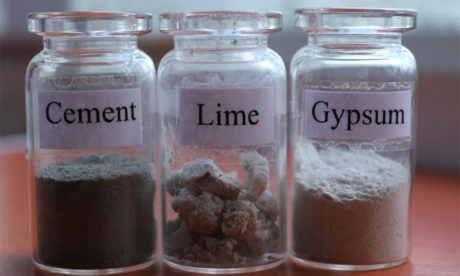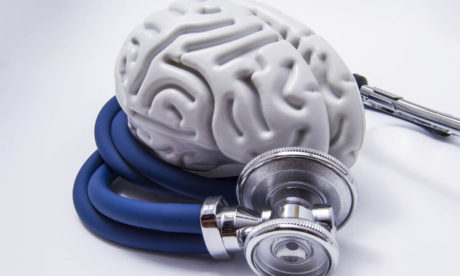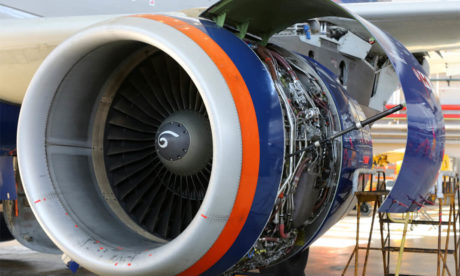The [course_title] course focuses on the fundamentals of image formation, camera imaging geometry, feature detection and matching. You will also learn multi-view geometry including stereo, motion estimation and tracking, and classification.
The basic methods for applications that include finding known models in images, depth recovery from the stereo, camera calibration, image stabilisation, automated alignment (e.g. panoramas), tracking, and action recognition will also be discussed in the course.
The purpose of the course is to teach the intuitions and mathematics of the methods so that you can differentiate between theory and practice in the problem sets.
Assessment
This course does not involve any written exams. Students need to answer 5 assignment questions to complete the course, the answers will be in the form of written work in pdf or word. Students can write the answers in their own time. Each answer needs to be 200 words (1 Page). Once the answers are submitted, the tutor will check and assess the work.
Certification
Edukite courses are free to study. To successfully complete a course you must submit all the assignment of the course as part of assessment. Upon successful completion of a course, you can choose to make your achievement formal by obtaining your Certificate at a cost of £49.
Having an Official Edukite Certification is a great way to celebrate and share your success. You can:
- Add the certificate to your CV or resume and brighten up your career
- Show it to prove your success
Course Credit: Georgia Institute of Technology and Georgia Tech Online Master of Science in Computer Science
Course Curriculum
| Introduction | |||
| Taking over for Aaron | 00:03:00 | ||
| Difference between CV and CP | 00:01:00 | ||
| Course Overview | 00:03:00 | ||
| What is Computer Vision | 00:01:00 | ||
| Why Study Computer Vision | 00:01:00 | ||
| OCR and Face Recognition | 00:02:00 | ||
| Object Recognition | 00:02:00 | ||
| Special Effects and 3D Modeling | 00:01:00 | ||
| Smart Cars | 00:02:00 | ||
| Sports | 00:01:00 | ||
| Vision Based Interaction | 00:03:00 | ||
| Security and Medical Imaging | 00:02:00 | ||
| Why is This Hard | 00:02:00 | ||
| Vision is NOT Image Processing | 00:03:00 | ||
| Course Overview | 00:03:00 | ||
| Topic Outline | 00:02:00 | ||
| Course Details | 00:03:00 | ||
| Software | 00:03:00 | ||
| Matlab | 00:02:00 | ||
| Octave | 00:03:00 | ||
| End | 00:01:00 | ||
| Images as functions | |||
| Intro | 00:01:00 | ||
| Images as Functions Part 1 | 00:02:00 | ||
| Images as Functions Part 2 | 00:02:00 | ||
| The Real Phyllis | 00:01:00 | ||
| Digital Images | 00:02:00 | ||
| Matlab Images are Matrices | 00:03:00 | ||
| Load and Display an Image | 00:01:00 | ||
| Inspect Image Values | 00:02:00 | ||
| Crop an Image | 00:01:00 | ||
| Color Planes | 00:02:00 | ||
| Add 2 Images Demo | 00:03:00 | ||
| Multiply by a Scalar Demo | 00:02:00 | ||
| Common Types of Noise | 00:03:00 | ||
| Image Difference Demo | 00:02:00 | ||
| Generate Gaussian Noise | 00:04:00 | ||
| Effect of Sigma on Gaussian Noise | 00:02:00 | ||
| Displaying Images in Matlab | 00:03:00 | ||
| End | 00:01:00 | ||
| Filtering | |||
| Intro | 00:01:00 | ||
| Gaussian Noise | 00:02:00 | ||
| Averaging Assumptions | 00:01:00 | ||
| Weighted Moving Average | 00:02:00 | ||
| Moving Average In 2D | 00:02:00 | ||
| Correlation Filtering | 00:02:00 | ||
| Averaging Filter | 00:02:00 | ||
| Gaussian Filter | 00:02:00 | ||
| Variance or Standard Deviation | 00:02:00 | ||
| Matlab | 00:02:00 | ||
| Keeping the Two Gaussians Straight | 00:02:00 | ||
| End | 00:01:00 | ||
| Linearity and convolution | |||
| Intro | 00:01:00 | ||
| Impulse Function and Response | 00:03:00 | ||
| Filtering an Impulse Signal | 00:02:00 | ||
| Correlation vs Convolution | 00:03:00 | ||
| Properties of Convolution | 00:02:00 | ||
| Computational Complexity and Separability | 00:03:00 | ||
| Boundary Issues | 00:02:00 | ||
| Methods | 00:03:00 | ||
| Practicing with Linear Filters | 00:03:00 | ||
| Unsharp Mask | 00:03:00 | ||
| Different Kinds of Noise | 00:02:00 | ||
| Median Filter | 00:03:00 | ||
| End | 00:01:00 | ||
| Filters as templates | |||
| Intro | 00:03:00 | ||
| 1D Correlation | 00:03:00 | ||
| Matlab Cross Correlation Doc | 00:01:00 | ||
| Template Matching | 00:02:00 | ||
| Template Matching Example | 00:01:00 | ||
| End | 00:01:00 | ||
| Edge detection: Gradients | |||
| Intro | 00:01:00 | ||
| Reduced Images | 00:01:00 | ||
| Edges | 00:02:00 | ||
| Edge Detection | 00:02:00 | ||
| Derivatives and Edges | 00:01:00 | ||
| What is a Gradient | 00:03:00 | ||
| Finite Differences | 00:03:00 | ||
| Partial Derivatives of an Image | 00:02:00 | ||
| The Discrete Gradient_1 | 00:02:00 | ||
| Sobel Operator | 00:03:00 | ||
| Well Known Gradients | 00:01:00 | ||
| But in the Real World | 00:04:00 | ||
| End | 00:01:00 | ||
| Edge detection: 2D operators | |||
| Intro | 00:01:00 | ||
| Derivative of Gaussian Filter 2D | 00:02:00 | ||
| Effect of Sigma on Derivatives | 00:02:00 | ||
| Canny Edge Detector | 00:04:00 | ||
| For Your Eyes Only Demo | 00:01:00 | ||
| Canny Results | 00:01:00 | ||
| Single 2D Edge Detection Filter | 00:02:00 | ||
| Edge Demo | 00:03:00 | ||
| End | 00:01:00 | ||
| Hough transform: Lines | |||
| Intro | 00:02:00 | ||
| Parametric Model | 00:02:00 | ||
| Line Fitting | 00:02:00 | ||
| Voting | 00:03:00 | ||
| Hough Space | 00:04:00 | ||
| Polar Representation for Lines | 00:03:00 | ||
| Basic Hough Transform Algorithm | 00:03:00 | ||
| Complexity of the Hough Transform | 00:02:00 | ||
| Hough Example | 00:02:00 | ||
| Hough Demo | 00:05:00 | ||
| Hough Demo Intro | 00:01:00 | ||
| Hough on a Real Image | 00:02:00 | ||
| Impact of Noise on Hough | 00:02:00 | ||
| Extensions | 00:03:00 | ||
| End | 00:01:00 | ||
| Hough transform: Circles | |||
| Intro | 00:02:00 | ||
| Detecting Circles with Hough | 00:03:00 | ||
| Hough Transform for Circles | 00:03:00 | ||
| Algorithm for Circles | 00:01:00 | ||
| Voting Practical Tips | 00:02:00 | ||
| Pros and Cons | 00:01:00 | ||
| End | 00:01:00 | ||
| Generalized Hough transform | |||
| Intro | 00:01:00 | ||
| Generalized Hough Transform | 00:03:00 | ||
| Generalized Hough Transform Example | 00:03:00 | ||
| Generalized Hough Transform Algorithm | 00:03:00 | ||
| Application in Recognition | 00:01:00 | ||
| Training | 00:03:00 | ||
| Application in Recognition | 00:01:00 | ||
| End | 00:01:00 | ||
| Fourier transform | |||
| Intro | 00:02:00 | ||
| Dali | 00:01:00 | ||
| Basis Sets | 00:03:00 | ||
| A Sum of Sines | 00:01:00 | ||
| Time and Frequency | 00:03:00 | ||
| Fourier Transform | 00:04:00 | ||
| Computing Fourier Transform | 00:04:00 | ||
| Fourier Transform More Formally | 00:02:00 | ||
| Limitations | 00:02:00 | ||
| Fourier Transform to Fourier Series | 00:02:00 | ||
| 2D | 00:02:00 | ||
| Examples | 00:02:00 | ||
| Man Made Scene | 00:02:00 | ||
| End | 00:01:00 | ||
| Convolution in frequency domain | |||
| Intro | 00:04:00 | ||
| Fourier Transform and Convolution | 00:03:00 | ||
| FFT | 00:01:00 | ||
| Smoothing and Blurring | 00:03:00 | ||
| 2D Example | 00:02:00 | ||
| Low and High Pass Filtering | 00:01:00 | ||
| Properties of Fourier Transform | 00:02:00 | ||
| Fourier Pairs | 00:04:00 | ||
| End | 00:01:00 | ||
| Aliasing | |||
| Intro | 00:02:00 | ||
| Fourier Transform Sampling Pairs | 00:02:00 | ||
| Sampling and Reconstruction | 00:03:00 | ||
| Untitled | 00:02:00 | ||
| Undersampling | 00:01:00 | ||
| Aliasing | 00:03:00 | ||
| Antialiasing | 00:02:00 | ||
| Impulse Train and Bed of Nails | 00:02:00 | ||
| Sampling Low Frequency Signal | 00:05:00 | ||
| Untitled | 00:03:00 | ||
| Aliasing in Images | 00:04:00 | ||
| Campbell-Robson Contrast Sensitivity Cur | 00:02:00 | ||
| Image Compression | 00:04:00 | ||
| End | 00:01:00 | ||
| Cameras and images | |||
| Intro | 00:01:00 | ||
| Heliograph | 00:01:00 | ||
| Imaging System | 00:01:00 | ||
| Image Formation | 00:02:00 | ||
| Aperture | 00:04:00 | ||
| Lenses | 00:02:00 | ||
| Thin Lens | 00:04:00 | ||
| Varying Focus | 00:01:00 | ||
| Depth of Field | 00:03:00 | ||
| Field of View | 00:03:00 | ||
| Zooming and Moving are not the Same | 00:03:00 | ||
| Dolly Zoom | 00:01:00 | ||
| Lenses Are Not Perfect | 00:03:00 | ||
| Lens Systems | 00:01:00 | ||
| End | 00:01:00 | ||
| Perspective imaging | |||
| Intro | 00:01:00 | ||
| Coordinate System | 00:03:00 | ||
| Modeling Projection | 00:02:00 | ||
| Homogeneous Coordinates | 00:01:00 | ||
| Perspective Projection | 00:03:00 | ||
| Geometric Properties of Projection | 00:01:00 | ||
| Parallel Lines | 00:04:00 | ||
| Vanishing Points | 00:02:00 | ||
| Human Vision | 00:01:00 | ||
| Other Models | 00:04:00 | ||
| End 12 | 00:01:00 | ||
| Stereo geometry | |||
| Intro | 00:02:00 | ||
| Why Multiple Views | 00:01:00 | ||
| How do Humans see in 3D | 00:04:00 | ||
| Stereo | 00:04:00 | ||
| Basic Idea | 00:01:00 | ||
| Random Dot Stereograms | 00:04:00 | ||
| Estimating Depth with Stereo | 00:01:00 | ||
| Geometry for a Simple Stereo System | 00:05:00 | ||
| Depth From Disparity | 00:01:00 | ||
| End | 00:01:00 | ||
| Epipolar geometry | |||
| Intro | 00:01:00 | ||
| Stereo Correspondence Constraints | 00:02:00 | ||
| Terms | 00:03:00 | ||
| Epipolar Constraint | 00:01:00 | ||
| Converging Cameras | 00:01:00 | ||
| Parallel Image Planes | 00:02:00 | ||
| End | 00:01:00 | ||
| Stereo correspondence | |||
| Intro | 00:01:00 | ||
| Correspondence | 00:04:00 | ||
| Correspondence Problem | 00:02:00 | ||
| Effect of Window Size | 00:01:00 | ||
| Occlusion | 00:02:00 | ||
| Ordering Constraint | 00:02:00 | ||
| Stereo Results | 00:03:00 | ||
| Dynamic Programming Formulation | 00:03:00 | ||
| Coherent Stereo on 2D Grid | 00:04:00 | ||
| Better Results and Challenges | 00:02:00 | ||
| End | 00:01:00 | ||
| Extrinsic camera parameters | |||
| Intro | 00:03:00 | ||
| Geometric Camera Calibration | 00:01:00 | ||
| Rigid Body Transformations | 00:02:00 | ||
| Notation | 00:03:00 | ||
| Rotation | 00:02:00 | ||
| What Does R Look Like | 00:04:00 | ||
| Rotation About Z Axis Example | 00:03:00 | ||
| Rotation in Homogeneous Coordinates | 00:01:00 | ||
| Rigid Transformation | 00:02:00 | ||
| Translation and Rotation | 00:02:00 | ||
| End | 00:01:00 | ||
| Instrinsic camera parameters | |||
| Intro | 00:01:00 | ||
| Ideal vs Real Intrinsic Parameters | 00:04:00 | ||
| Improving Intrinsic Parameters | 00:03:00 | ||
| Combining Extrinsic and Intrinsic Calibration Parameters | 00:02:00 | ||
| Other Ways to Write the Same Equation | 00:02:00 | ||
| Camera Paramerters | 00:02:00 | ||
| End | 00:01:00 | ||
| Calibrating cameras | |||
| Intro | 00:01:00 | ||
| Calibration Using Known Points | 00:02:00 | ||
| Direct Linear Calibration Homogeneous Part 1 | 00:03:00 | ||
| Direct Linear Calibration Homogeneous Part 2 | 00:02:00 | ||
| The SVD Trick Part 1 | 00:03:00 | ||
| The SVD Trick Part 2 | 00:02:00 | ||
| The SVD Trick Part 3 | 00:02:00 | ||
| Direct Linear Calibration Inhomogeneous | 00:02:00 | ||
| Direct Linear Calibration Transformation | 00:02:00 | ||
| Geometric Error | 00:04:00 | ||
| The Pure Way | 00:03:00 | ||
| The Easy Way | 00:01:00 | ||
| Multi Plane Calibration | 00:02:00 | ||
| End | 00:01:00 | ||
| Image to image projections | |||
| Intro | 00:01:00 | ||
| 2D Transformations | 00:01:00 | ||
| Special Projective Transformations | 00:04:00 | ||
| Projective Transformations | 00:01:00 | ||
| End | 00:01:00 | ||
| Homographies and mosaics | |||
| Intro | 00:01:00 | ||
| Projective Planes | 00:02:00 | ||
| Image Reprojection | 00:04:00 | ||
| Natural Geometry | 00:04:00 | ||
| Homographies | 00:04:00 | ||
| Applying Homography | 00:03:00 | ||
| Homographies and 3D Planes | 00:03:00 | ||
| Image Rectification | 00:03:00 | ||
| Football Example | 00:02:00 | ||
| Forward Warping | 00:02:00 | ||
| Inverse Warping | 00:03:00 | ||
| End | 00:02:00 | ||
| Projective geometry | |||
| Intro | 00:01:00 | ||
| Last Time | 00:03:00 | ||
| Point and Line Duality | 00:05:00 | ||
| Homogeneous Coordinates | 00:01:00 | ||
| Ideal Points and Lines | 00:02:00 | ||
| 3D Projective Geometry | 00:02:00 | ||
| End | 00:01:00 | ||
| Essential matrix | |||
| Intro | 00:02:00 | ||
| Stereo Correspondence | 00:03:00 | ||
| Stereo Geometry | 00:02:00 | ||
| Aside | 00:01:00 | ||
| From Geometry to Algebra | 00:02:00 | ||
| Aside | 00:02:00 | ||
| Essential Matrix | 00:04:00 | ||
| Essential Matrix Example Part 1 | 00:01:00 | ||
| Essential Matrix Example Part 2 | 00:04:00 | ||
| End | 00:01:00 | ||
| Fundamental matrix | |||
| Intro | 00:02:00 | ||
| Weak Calibration | 00:04:00 | ||
| Uncalibrated Case | 00:04:00 | ||
| Matrix Multiplication | 00:02:00 | ||
| Properties of the Fundemental Matrix Part 1 | 00:04:00 | ||
| Properties of the Fundemental Matrix Part 2 | 00:02:00 | ||
| Properties of the Fundemental Matrix Part 3 | 00:01:00 | ||
| Fundemental Matrix | 00:02:00 | ||
| Finding Fundemental Matrix Example | 00:02:00 | ||
| Computing F from Correspondences | 00:01:00 | ||
| The Infamous Eight Point Algorithm | 00:03:00 | ||
| Rank of F | 00:04:00 | ||
| Fix the Linear Solution | 00:02:00 | ||
| Stereo Image Rectification | 00:02:00 | ||
| Applications | 00:02:00 | ||
| End | 00:01:00 | ||
| Introduction to "features" | |||
| Intro | 00:01:00 | ||
| Image Point Matching Problem | 00:02:00 | ||
| Matching with Features | 00:04:00 | ||
| Characteristics of Good Features | 00:04:00 | ||
| End | 00:01:00 | ||
| Finding corners | |||
| Intro | 00:03:00 | ||
| Corner Detection | 00:03:00 | ||
| Harris Corners | 00:03:00 | ||
| Harris Corners Illustrated | 00:02:00 | ||
| Small Shifts | 00:03:00 | ||
| Second Order Taylor Expansion Part 1 | 00:03:00 | ||
| Second Order Taylor Expansion Part 2 | 00:03:00 | ||
| Quadratic Approximation Simplification | 00:02:00 | ||
| Interpreting the Second Moment Matrix Part 1 | 00:02:00 | ||
| Interpreting the Second Moment Matrix Part 2 | 00:04:00 | ||
| Interpreting the Eigenvalues | 00:02:00 | ||
| Harris Corner Response Function | 00:03:00 | ||
| Textured Regions | 00:02:00 | ||
| Harris Detector Algorithm | 00:02:00 | ||
| Harris Detector Workflow | 00:03:00 | ||
| Other Corners | 00:01:00 | ||
| End | 00:01:00 | ||
| Scale invariance | |||
| Intro | 00:02:00 | ||
| Harris Detector Properties | 00:02:00 | ||
| More Harris Detector Properties | 00:03:00 | ||
| Scale Invariant Detection | 00:03:00 | ||
| One Method for Scale Invariant Detection | 00:03:00 | ||
| A Good Function for Scale Detection | 00:04:00 | ||
| Key Point Localization | 00:03:00 | ||
| Extrema at Different Scales | 00:03:00 | ||
| End | 00:01:00 | ||
| SIFT descriptor | |||
| Last Time | 00:05:00 | ||
| SIFT | 00:02:00 | ||
| Idea of SIFT | 00:03:00 | ||
| Overall SIFT Procedure | 00:02:00 | ||
| Orientation Assignment | 00:02:00 | ||
| Keypoint Descriptors | 00:01:00 | ||
| SIFT Vector Formation | 00:03:00 | ||
| Smoothness | 00:03:00 | ||
| Evaluating the SIFT Descriptors | 00:03:00 | ||
| Experimental Results | 00:02:00 | ||
| End | 00:01:00 | ||
| Matching feature points (a little) | |||
| Last Time | 00:01:00 | ||
| Nearest Neighbor | 00:03:00 | ||
| Wavelet-Based Hashing | 00:02:00 | ||
| Locality Sensitive Hashing | 00:03:00 | ||
| 3D Object Recognition | 00:03:00 | ||
| Recognition Under Occlusion | 00:02:00 | ||
| SIFT in Sony Aibo | 00:02:00 | ||
| End | 00:01:00 | ||
| Robust error functions | |||
| Intro | 00:01:00 | ||
| Feature Based Alignment | 00:02:00 | ||
| Feature Matching | 00:02:00 | ||
| Feature Space Outlier Rejection | 00:02:00 | ||
| Lowe’s Better Way | 00:03:00 | ||
| Typical Least Squares Line Fitting | 00:04:00 | ||
| Total Least Squares | 00:05:00 | ||
| Least Squares as Likelihood Maximization | 00:03:00 | ||
| Non Robustness to Non Gaussian Noise | 00:02:00 | ||
| Robust Estimators | 00:04:00 | ||
| End | 00:01:00 | ||
| RANSAC | |||
| Intro | 00:01:00 | ||
| Find Consistent Matches | 00:02:00 | ||
| RANSAC Main Idea | 00:01:00 | ||
| RANSAC Line Fitting Example | 00:04:00 | ||
| Distance Threshold | 00:05:00 | ||
| Calculate N | 00:03:00 | ||
| What does N Look Like | 00:02:00 | ||
| How Big Does N Need to Be | 00:03:00 | ||
| RANSAC for Estimating Homography | 00:01:00 | ||
| Adaptive Procedure | 00:03:00 | ||
| RANSAC for Fundemental Matrix | 00:04:00 | ||
| RANSAC Conclusions | 00:03:00 | ||
| End | 00:01:00 | ||
| Photometry | |||
| Intro | 00:02:00 | ||
| Photometry | 00:05:00 | ||
| Surface Appearance | 00:01:00 | ||
| Radiometry Radiance | 00:02:00 | ||
| Radimetry Irradiance | 00:02:00 | ||
| BRDF | 00:02:00 | ||
| Important Properties of BRDFs | 00:02:00 | ||
| Reflection Models | 00:03:00 | ||
| Diffuse Reflection and Lambertian BRDF Part 1 | 00:02:00 | ||
| Diffuse Reflection and Lambertian BRDF Part 2 | 00:02:00 | ||
| Diffuse Reflection and Lambertian BRDF Part 3 | 00:02:00 | ||
| Specular Reflection and Mirror BRDF | 00:03:00 | ||
| Specular Reflection and Glossy BRDF | 00:02:00 | ||
| Phong Reflection Model | 00:01:00 | ||
| End | 00:01:00 | ||
| Lightness | |||
| Intro | 00:02:00 | ||
| Lightness Assumptions | 00:04:00 | ||
| Ambiguity of Lighting and Reflectance | 00:03:00 | ||
| The Mondrian World | 00:03:00 | ||
| Lighting in the Mondrian World | 00:02:00 | ||
| Retinex | 00:02:00 | ||
| 1D Lightness Retinex | 00:02:00 | ||
| Color Retinex | 00:02:00 | ||
| Sharp edges | 00:01:00 | ||
| Human Color and Lightness Constancy | 00:03:00 | ||
| End | 00:01:00 | ||
| Shape from shading | |||
| Intro | 00:01:00 | ||
| Shape from Shading or Lighting | 00:01:00 | ||
| Surface Normals Math | 00:01:00 | ||
| Surface Normal More Math | 00:02:00 | ||
| Gaussian Sphere and Gradient Space Projection | 00:02:00 | ||
| Gradient Space of Source and Normal | 00:02:00 | ||
| Shape from Shading Input and Output | 00:02:00 | ||
| Lambertian Case | 00:04:00 | ||
| Iso Brightness Contours | 00:02:00 | ||
| Shape from a Single Image | 00:03:00 | ||
| Photometric Stereo | 00:02:00 | ||
| Solving the Equations | 00:02:00 | ||
| pq Space | 00:02:00 | ||
| Examples | 00:02:00 | ||
| Real Application | 00:04:00 | ||
| End | 00:02:00 | ||
| Introduction to motion | |||
| Intro | 00:03:00 | ||
| Motion Applications | 00:03:00 | ||
| Motion and Perceptual Organization | 00:04:00 | ||
| Impoverished Motion | 00:01:00 | ||
| More Applications of Motion Analysis | 00:02:00 | ||
| Motion Estimation Techniques | 00:02:00 | ||
| End | 00:01:00 | ||
| Dense flow: Brightness constraint | |||
| Intro | 00:01:00 | ||
| Motion Estimation Optical Flow | 00:02:00 | ||
| Problem Definition Optical Flow | 00:03:00 | ||
| Optical Flow Constraints | 00:02:00 | ||
| Combining These Two Equations | 00:03:00 | ||
| Gradient Component of Flow | 00:03:00 | ||
| Aperture Problem | 00:03:00 | ||
| Smooth Optical Flow | 00:05:00 | ||
| End | 00:01:00 | ||
| Dense flow: Lucas and Kanade | |||
| Intro | 00:02:00 | ||
| Solving the Aperture Problem | 00:03:00 | ||
| Combining Local Constraints | 00:02:00 | ||
| RGB Version | 00:01:00 | ||
| Errors in Lucas Kanade | 00:03:00 | ||
| Optical Flow Iterative Estimation | 00:02:00 | ||
| Implementation Issues | 00:01:00 | ||
| End | 00:01:00 | ||
| Assessment | |||
| Submit Your Assignment | 00:00:00 | ||
| Certification | 00:00:00 | ||
Course Reviews
No Reviews found for this course.






